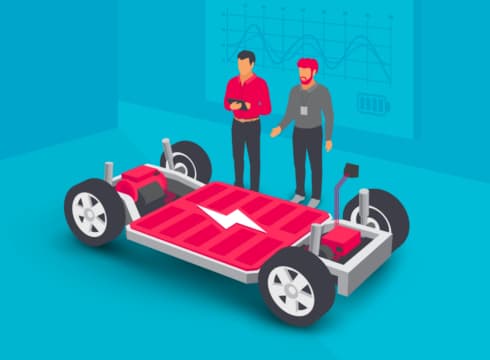India had pledged to be ‘Net Zero by 2070’ at the COP26 conference held in Glasgow, Scotland, in 2021
The NDC submitted by the government to the UNFCCC emphasised a healthy and sustainable way of living based on traditions and values of conservation and moderation
One of the prominent features of the updated NDC is to enhance India's manufacturing capabilities and exports in the clean energy sector, like zero-emission vehicles like electric vehicles
Inc42 Daily Brief
Stay Ahead With Daily News & Analysis on India’s Tech & Startup Economy
India had pledged to be ‘Net Zero by 2070’ at the COP26 conference held in Glasgow, Scotland, in 2021. The Nationally Determined Contribution (NDC) submitted by the Government of India to the United Nations Framework Convention on Climate Change (UNFCCC) emphasised a healthy and sustainable way of living based on traditions and values of conservation and moderation, including through a mass movement for ‘LIFE’ or ‘Lifestyle for Environment’ as a key to combating climate change.
In addition to prioritising an increased contribution of renewable energy to the country’s overall energy consumption, India also plans to promote a lifestyle that is sustainable for our planet. One of the prominent features of the updated NDC is to enhance India’s manufacturing capabilities and exports in the clean energy sector, like zero-emission vehicles like electric vehicles (EVs).
Sustainable mobility through EVs is one of the ways that many countries worldwide are adopting to decarbonise their cities and minimise the impact of transportation on their total greenhouse gas emissions. However, the target for widespread EV adoption, like India’s goal for 30% EV penetration by 2030, for day-to-day use is easier said than done.
Exotic Materials
Firstly, the materials required to build an EV are exotic in nature. Metals like cobalt, lithium and nickel are expensive and essential to manufacture the lithium-ion batteries that power up the drive for decarbonisation. But the availability of these metals is limited and restricted to only a handful of geographies across the globe.
For example, 70% of the cobalt reserves are estimated to be confined within the boundaries of the Democratic Republic of Congo (DRC), which is infamous for its mining practices due to several mafias trying to gain control of this precious resource by exploiting locals as forced labourers.
Recycling Of EV Waste
Secondly, once the EVs, specifically their lithium-ion batteries, have fulfilled their primary purpose, it becomes imperative that the ‘waste’ generated at the end is dealt with responsibly lest we repeat the ecological impacts of reckless usage of plastics to drive consumer growth at scale. Gigantic recycling facilities for lithium-ion batteries can be established to mitigate the effects of both issues to a certain extent, more so for the latter than the first.
Recycling lithium-ion battery waste generated from used electric vehicles can support the lithium-ion cell manufacturing industry, and consequently the EV industry, by providing a ‘green’ alternative to the supply of crucial metals like cobalt, lithium and nickel. Until now, the industry has been entirely reliant on importing these metals from other countries and has been subject to constant geopolitical tensions between nations eyeing dominance over the global supply chain.
The supply of recycled materials also goes in line with the government’s mandate under the Battery Waste Management Rules, 2022, that the producers of lithium-ion cells and batteries must use a minimum percentage of recycled materials, ranging from a minimum of 5% to even more than 40% of the total dry weight of a battery pack.
Another critical aspect of these rules is that recyclers must also maintain minimum recovery percentages to ensure that unscientific methodologies are not implemented that are detrimental to the entire cause of reversing climate change.
One of the consequences is that recyclers will be pushed to extract more value from the waste and, possibly, pass on the monetary benefit to the end consumers via OEMs through buyback schemes to reduce the overall lifecycle cost of a battery pack. This reduction in the price of lithium-ion batteries for EVs can be highly significant because they currently constitute almost 50% of the total cost of an electric vehicle. As the vehicle cost goes down, the mass adoption of EVs should pick up pace in tandem and, thus, help India achieve the target of Net Zero by 2070 by supporting the EV industry.
Responsible Supply Chain
Lastly, and most importantly, when a supply chain is established by recyclers to collect the dead batteries from end consumers, it would ensure that the precious resources contained within this apparent ‘waste’ are not lost. Dumping these batteries in landfills is like waiting for a time bomb to go off, causing massive fires and health hazards for the local communities.
Once the reverse logistics mechanism is set up and eco-friendly recycling technologies are deployed, the EV industry can focus solely on providing affordable electric vehicles for the masses. The recycling industry can stand in to fulfil the supporting role for not only the growth of EVs but also for the country and humanity as a whole.
{{#name}}{{name}}{{/name}}{{^name}}-{{/name}}
{{#description}}{{description}}...{{/description}}{{^description}}-{{/description}}
Note: We at Inc42 take our ethics very seriously. More information about it can be found here.


